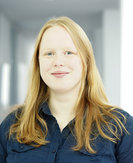Advanced telemonitoring of Left Ventricular Assist Device patients for the early detection of thrombosis
Jenny I. Glitza,Frerk Müller-von Aschwege,Marco Eichelberg,Nils Reiss,Thomas Schmidt,Christina Feldmann,Regina Wendl,Jan D. Schmitto,Andreas Hein
Journal of Network and Computer Applications
In modern times, advanced heart failure is a serious issue. Due to a shortage of donor hearts, the implantation of “Left Ventricular Assist Device” (LVAD) as destination therapy has become a common alternative. The LVAD is a mechanical continuous flow pump. However, there are several LVAD complications e.g. a pump thrombosis as a formation of a blood clot inside the LVAD pump. It can result in pump stoppage and lead to death. In order to ensure the success of thrombolytic therapy, it is important to detect a thrombosis early. Since an increase in LVAD power consumption is one indication for a pump thrombosis, this paper shows three algorithms analyzing the LVAD power. These algorithms test absolute and relative threshold and also consider the circadian fluctuation in LVAD power during the day. For the evaluation, a set of 352 LVAD log files including 7 thromboses was used. Compared to the “High Power Alarm”, which is a predefined thrombosis alarm of the LVAD controller, these algorithms detect all tested LVAD thrombosis up to 140 h earlier. Nevertheless, the algorithms still cause false alarms ({\textless}5{\%}) in patients without an LVAD thrombosis. To reach an earlier and more precise LVAD thrombosis detection, continuous LVAD monitoring is required. Because the LVAD does not provide an interface, an Electrocardiography (ECG) based approach is tested as an alternative monitoring to acquire LVAD data. The LVAD produces an electromagnetical field, whose signal is visible in the ECG. It is utilized to calculate the LVAD speed of 9 LVAD patients using the Fast Fourier Transform. An accuracy of 99.8{\%} was achieved. As external events also influence the LVAD measurements, changes in body posture on the LVAD is tested. The results show that the amplitude, measured during supine position, is significantly different to the amplitude measured during sitting and standing.
2018
ISSN 1084-8045
article
Elsevier
118
74-82
Medolution
Medical Care Evolution
Medical Care Evolution




